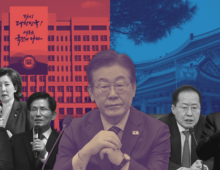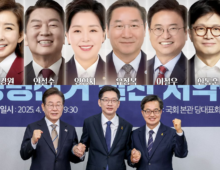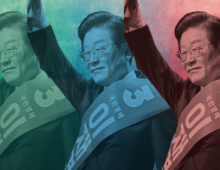|
Feature A nation divided: Protesters voice conflicting views on Yoon’s impeachmentSouth Koreans across the country express fear and hope as both sides see impeachment as a fight for the nation’s future Joon Ha ParkJanuary 30, 2025 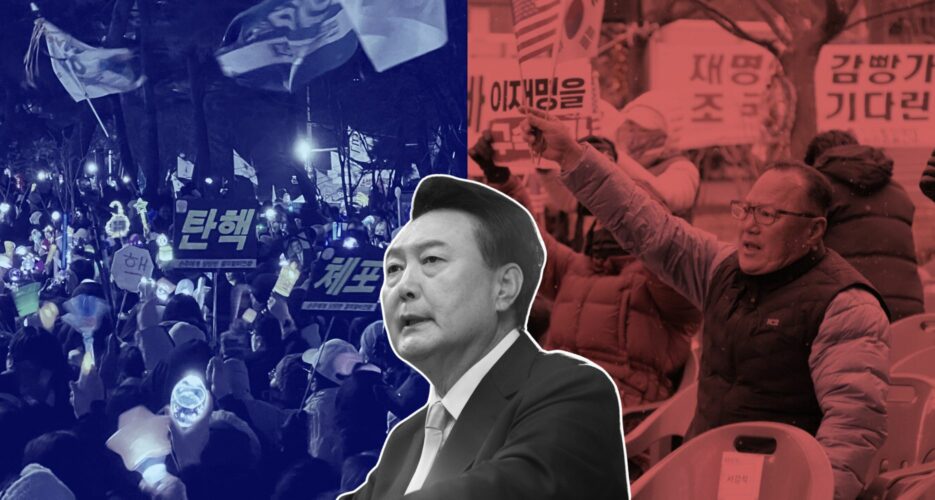 A collage of President Yoon Suk-yeol with opposing rallies. Citizens hold up K-Pop light sticks in front of the National Assembly on Dec. 14 after Yoon's impeachment (left), elderly citizens come together near Gwanghwamun Square on Dec. 16 in support of Yoon (right) | Image: ROK Presidential Office, Korea Pro, edited by Korea Pro South Korea is more politically polarized than ever following President Yoon Suk-yeol’s Dec. 3 martial law declaration and his subsequent impeachment on Dec. 14. The crisis has triggered mass protests, with progressives celebrating Yoon’s ouster as a victory for democracy and conservatives condemning it as a coup against the elected government. From Dec. 4 to 16, Korea Pro spoke with citizens across Seoul’s political divide. In Yeouido, hundreds of thousands of protesters gathered outside the National Assembly with K-pop light sticks and protest songs, calling for Yoon’s impeachment. Meanwhile, just four miles away in Gwanghwamun Square, conservative demonstrators waved American and South Korean flags, warning of communist threats. As the country awaits the Constitutional Court’s final ruling on Yoon’s impeachment, both camps remain entrenched, seeing the stakes as existential. 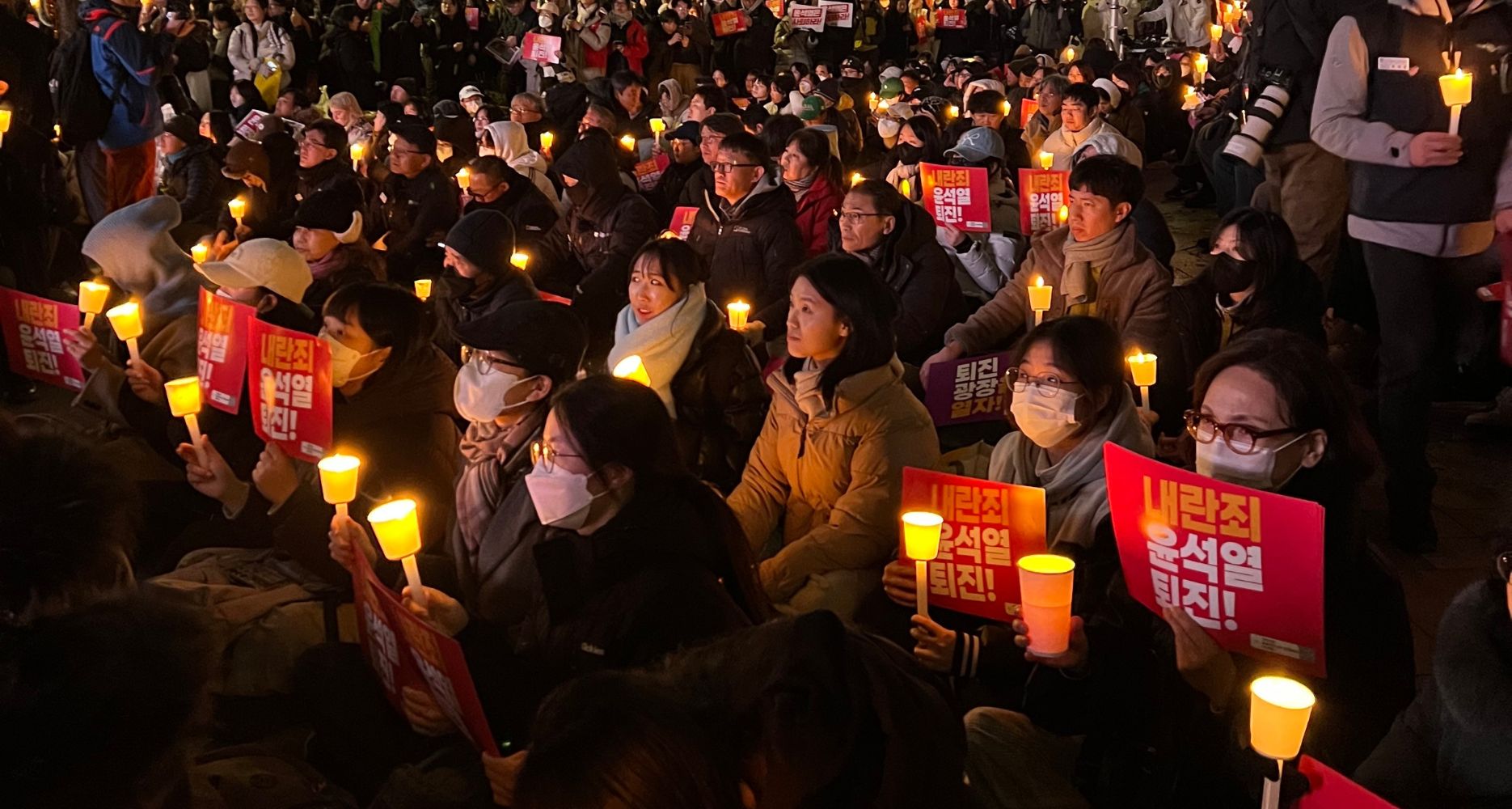 South Korean citizens gather in front of Gwanghwamun Square to express their anger at Yoon Suk-yeol’s Dec. 3 martial law declaration, Dec. 4, 2024 | Image: Korea Pro MARTIAL LAW SHOCKS THE NATION The brief imposition of martial law and the deployment of armed troops to the National Assembly stunned the country, evoking painful memories of past military regimes. Many viewed the move as a desperate attempt by Yoon to retain power, while his supporters argued it was necessary to stabilize the nation. Less than 24 hours after Yoon rescinded his own decree, hundreds gathered in Gwanghwamun Square in protest. Among them was Oh Young-seok, 54. “A single president nearly dragged the country back to the early 1980s in an instant,” Oh said. “We bled and fought for our democracy. Letting him stay in office would only ruin the nation.” Shin, a 40-year-old office worker, described a growing unease. “This morning, I felt a strange sense of disconnect,” she told Korea Pro. “Waking up, going to work, life seemed to go on as usual. But beneath the surface, people are filled with an indescribable anger. Even while carrying on with our daily lives, we are determined to set things right.”  South Korean citizens demonstrate in front of the National Assembly, calling for Yoon Suk-yeol’s impeachment, Dec. 14, 2024 | Image: Korea Pro YEOUIDO DEMANDS IMPEACHMENT On Dec. 7, an estimated 280,000 protesters gathered outside the National Assembly, urging lawmakers to remove Yoon from office. The first impeachment vote failed after ruling People Power Party lawmakers staged a coordinated boycott. The move angered many protesters, including Kim Chang-gyu, a 55-year-old father of two from Goyang. “Politicians who only bring anxiety and disappointment to the people shouldn’t be allowed to jeopardize our children’s future any longer. It makes me angry and frustrated,” Kim told Korea Pro. Despite the setback, demonstrators remained determined. Yoon Kyung-hoe, a former team leader of the May 18 Truth Commission, said she was struck by the resilience of those gathered. “The strength and resilience of citizens remind me that safeguarding democracy isn’t just politicians’ responsibility — the people play a vital role,” Yoon said. She noted that young people, especially women, had taken on leadership roles in the movement. “Their collective energy and maturity gives me hope,” she said.  South Korean citizens wave K-pop light sticks in front of the National Assembly after Yoon Suk-yeol’s impeachment bill passed the parliamentary floor, Dec. 14, 2024 | Image: Korea Pro LIGHT STICKS AND UNITY On Dec. 14, the protests reached their peak as 500,000 people gathered to watch the second impeachment vote. Unlike the first attempt, this time lawmakers voted 204 to 85 in favor of impeachment, making Yoon the third president in South Korean history to be impeached by the legislature. The demonstrations were defined by modern protest culture, especially among younger participants. Women in their 20s and 30s brought K-pop light sticks, singing Girls’ Generation’s “Into the New World” — a song that has become a de facto protest song in recent years. Hong Chaewon, 25, said the integration of pop culture into protests made the experience more engaging. “It made me feel like democratic consciousness is part of everyday life. The atmosphere wasn’t heavy, so I could participate in a fun way,” Hong said. For some, the moment was deeply personal. Kim Doha, 42, welcomed the results. “Finally, I think we can all listen to Mariah Carey songs in peace at Christmas. I felt anxious this morning, but being here with everyone today reassured me,” she told Korea Pro. On Dec. 31, the National Assembly’s Steering Committee passed a resolution expressing gratitude to members of the public who gathered to protest against Yoon’s martial law declaration, calling for his impeachment. It was the first parliamentary message of gratitude to citizens in 64 years. The message concluded with “profound gratitude, infinite respect and unwavering trust” in the people, adding that it was “an honor to share this era with them.”  South Korean conservative demonstrators protest against Yoon’s impeachment near Gwanghwamun Square, Dec. 16, 2024 | Image: Korea Pro CONSERVATIVES RALLY IN GWANGHWAMUN While progressives in Yeouido celebrated impeachment, a very different scene unfolded four miles away in Gwanghwamun Square, where conservative protesters denounced the vote as a political coup. Elderly demonstrators gathered near an old department store, waving American and South Korean flags, listening to speeches and watching news livestreams on their phones. “President Yoon’s declaration of martial law was a decision to save the nation from the communists,” one speaker told roughly 300 people at a Dec. 11 rally. The protests grew in size, with 30,000 people gathering near Gwanghwamun Station on Dec. 14 to oppose impeachment. Many attendees expressed deep distrust of mainstream media, relying instead on right-wing YouTube channels. “We and YouTube need to stop these pro-North Korea forces. The media is the biggest problem,” an elderly speaker declared at a Dec. 11 protest. Heo, a 61-year-old woman, told Korea Pro that her involvement in the protests had strained her family relationships. “My children hate that I come to these protests. My husband doesn’t come with me, but he knows Pastor Jeon is right,” she said, referring to Jeon Gwang-hoon, a conservative pastor who has played a prominent role in anti-impeachment activism. Protesters gathered near the National Assembly with signs reading “Oppose Impeachment” and “Arrest Lee Jae-myung,” referring to the opposition leader many conservatives see as corrupt. Tensions escalated after impeachment. Kim Chung-il, a former professor at National Defense University who now leads the “Sacrificial Brigade for the Nation,” a conservative activist group, addressed the crowd. “Eradicate the pro-North Korea forces! They must be dealt with, starting from the top. Jesus will strike down the opposition. We will win!” he shouted, drawing applause. 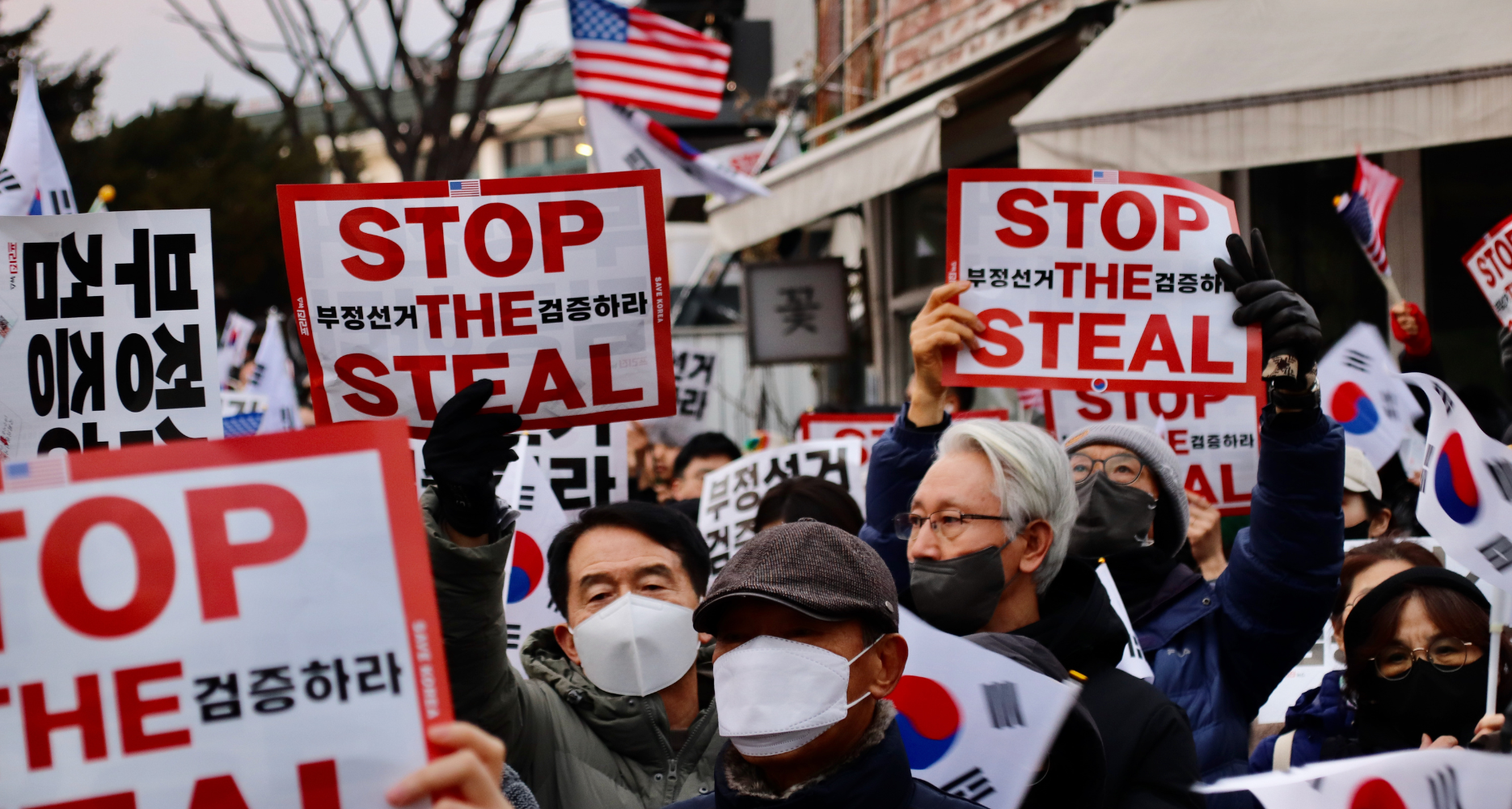 Pro-Yoon protestors hold up signs reading “Stop the Steal” in front of South Korea’s Constitutional Court, Jan. 19, 2025 | Image: Korea Pro JANUARY RIOTS AND ESCALATION By mid-January, political divisions had hardened further. The situation reached a boiling point on Jan. 18 when pro-Yoon rioters stormed the Seoul Western District Court in response to the former president’s arrest. The chaos drew comparisons to the 2021 U.S. Capitol attack, as some demonstrators held signs reading “Stop the Steal” and accused the opposition of rigging the system. The storming of the courthouse underscored the growing radicalization of Yoon’s supporters. As both sides brace for the Constitutional Court’s decision in 2025, the country remains on edge. South Korea’s impeachment crisis has become a flashpoint for deepening political and generational divides. To progressives, Yoon’s martial law decree was a clear violation of democratic principles that demanded accountability. To conservatives, impeachment was an illegitimate power grab by the opposition. Yoon’s arrest in January has only widened the gap. With both sides unwilling to back down, the coming months will test the country’s social stability and democratic resilience. Whatever the Constitutional Court decides, South Korea’s political turmoil is far from over. Edited by John Lee South Korea is more politically polarized than ever following President Yoon Suk-yeol’s Dec. 3 martial law declaration and his subsequent impeachment on Dec. 14. The crisis has triggered mass protests, with progressives celebrating Yoon’s ouster as a victory for democracy and conservatives condemning it as a coup against the elected government. From Dec. 4 to 16, Korea Pro spoke with citizens across Seoul’s political divide. Get your
|
|
Feature A nation divided: Protesters voice conflicting views on Yoon’s impeachmentSouth Koreans across the country express fear and hope as both sides see impeachment as a fight for the nation’s future  South Korea is more politically polarized than ever following President Yoon Suk-yeol’s Dec. 3 martial law declaration and his subsequent impeachment on Dec. 14. The crisis has triggered mass protests, with progressives celebrating Yoon’s ouster as a victory for democracy and conservatives condemning it as a coup against the elected government. From Dec. 4 to 16, Korea Pro spoke with citizens across Seoul’s political divide. © Korea Risk Group. All rights reserved. |






